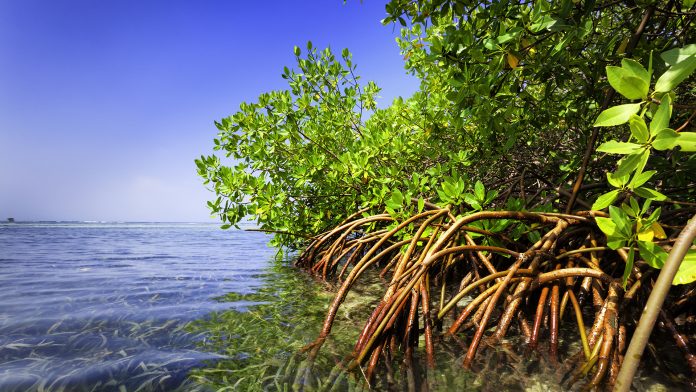Marine ecologists from the University of Hong Kong have discovered that mangroves may be at risk by the low functional diversity of invertebrates.
Mangroves were once dominant forests in the tropics, but in recent years they have been vanishing at staggeringly high rates. While this endangered ecosystem maintains a wide range of specialised invertebrates, not much is understood about the effect of mangrove deforestation on the functional multiplicity and hardiness of these local faunas.
Protecting mangrove ecosystems
July 26 marked the International Day for the Conservation of the Mangrove Ecosystem (World Mangrove Day), which is recognised each year by UNESCO. The objective of this celebration is to raise awareness of the significance of mangrove ecosystems.
Mangroves, more than just trees, together combine to form a novel, extraordinary and vulnerable habitat. Their ability to function ecologically is reliant upon the mutual relationships between their floral and faunal elements, and there is no feasible mangrove forest without a strong community of invertebrates maintaining it.
In order to tackle this challenge, which is critical to manage unspoiled mangroves and rehabilitate degraded ones, Dr Stefano Cannicci, the Associate Director of the Swire Institute of Marine Science and Associate Professor from the Research Division for Ecology and Biodiversity, The University of Hong Kong, alongside Professor Joe Shing Yip LEE, the Professor and Director, Simon FS Li Marine Science Laboratory, School of Life Sciences, The Chinese University of Hong Kong, as well as their colleagues, accumulated information for 209 crustacean and 155 mollusc species spanning over 16 mangrove forests around the world.
They discovered that mangroves, when contrasted to other ecosystems, are amongst those with the lowest functional redundancy between resident fauna that has been identified to date. This indicates that these coastal vegetations are one of the most unstable and uncertain ecosystems in the world.
Diversity is the key to survival
The researchers were able to classify the species into 64 different functional entities founded on distinctive combinations of three operational characteristics: feeding habits, behavioural traits possibly impacting ecosystem traits, and micro-habitat.
They discovered that over 60% of the sites demonstrated no functional redundancy; specifically, the majority of the functional entities at those sites consisted of only one species, with the noteworthy exemptions being sites in South America, the eastern Indian Ocean and the western Pacific Ocean.
On average, 57% of the functional entities are achieved by a single species, signifying that even a small local loss of invertebrate diversity may lead to substantially damaging consequences for mangrove functionality and pliability, as invertebrates are critical for the mangrove nutrient cycling and for oxygen provision to the tree roots and these functions will be misplaced with a reduction in functional diversity.
As well as this, the low functional multiplicity of the resident invertebrates suggests that mangroves are some of the most at-risk ecosystems on Earth. Even so, some tiny mangrove patches, like those in Hong Kong and Mozambique, harbour multifunctional invertebrate assemblages that may act as biodiversity reservoirs, which may demonstrate to be vital for conservation endeavours going forward.
The researchers stressed that exploring the functional diversity of the resident faunal assemblages is key to evaluating the susceptibility of mangrove forests to environmental changes, as well as for constructing efficient management, conservation, and restoration plans.
Currently, the wellbeing and strength of mangrove forests across the world are measured by their total increase in area. Unfortunately, this method does not take into account the real feasibility and functionality of those forests.
Mangroves are not merely a cluster of trees; they are a complicated ecosystem constructed on strong faunal communities, as well as on the communication between such communities and the trees. Mangrove management and rehabilitation ventures in the future must consider the stability and redundancy of the faunal component of mangroves.





